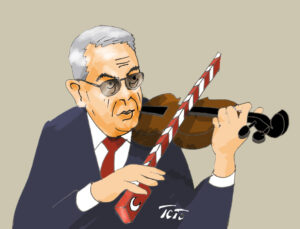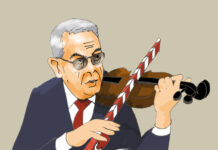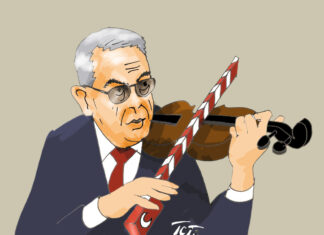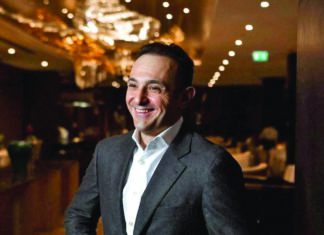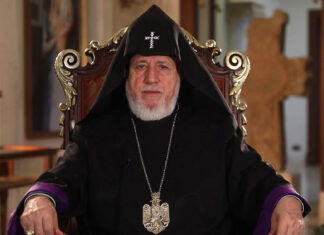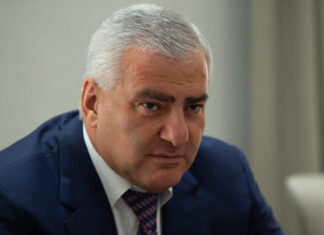SEVAN, Armenia — The transcultural literature project Geschichten vom Schwarzen Meer – Black Sea Lit is meant to open a dialog about the Black Sea region, including Armenia. Together with the curators Nino Haratischwili (2023) and Laura Cwiertnia (2024), the Goethe-Institut invited 20 authors from Armenia, Bulgaria, Georgia, Romania and Ukraine to engage in conversation about and beyond the region.
In its second iteration, this year the last leg of the project took place in Armenia in June and was implemented by the Goethe Center Yerevan in partnership with the ARI Literature Foundation in Armenia. ARI was founded by agent Arevik Ashkharoyan as a non-profit organization to implement projects aimed at developing the local book market and supporting Armenian writers. This past June 26, I had the pleasure of attending a reading that took place at Lake Sevan towards the end of the writers’ residency there. The event, titled “Մի բուռ ջուր։” or “A handful of water” took place at the historic Sevan’ Writers House.
The event began with the Goethe Center Director Jan-Tage Kühling presenting the project within the context of the organization’s global cultural outreach initiatives. This was followed by a presentation of a truly unique book — the Armenian edition of Laura Cwiertnia’s novel, Our Names Are Different in the Street (Դրսում մեր անուններն ուրիշ են) which recounts four generations of an Armenian family, taking the reader from Turkey and the Armenian Genocide all the way to modern-day Germany where the author was born․
Laura is a German writer with Armenian roots, but she grew up in Germany with Turkish friends and only a distant sense of her Armenian self, until she makes a fateful trip to Armenia and finally finds a much-needed sense of belonging.

Ashkharoyan presented the book along with translator Mariam Gurzadyan, who is also a project coordinator at Goethe Center Yerevan. Gurzadyan read an extract from the book in Armenian and I had the honor of reading the English translation. In her book, Cwiertnia contrasts her experience in the vibrant metropolis of Istanbul with her current trip to Armenia: “Lake Sevan is still. Not a single wave on the water. Today, a fishing boat lies almost motionless in the small harbour. Two bearded men sit on deck, slowly pulling on cigarettes, as if the hands on their wristwatches are just for show, certainly not to guide their day. The character of the lake is reflected in the souvenirs sold by the roadside. Semi-precious stones, mined from the nearby mountains, glint in a silvery turquoise similar to the lake…The surface is clear, but you can lose yourself in the depths of the moon stones. Few customers pass by the stalls today. Unlike the stallholders in Istanbul, these vendors do not call out to attract them. They just grin at them shyly.”
This reading was followed by a presentation about the Sevan Writers’ House itself by the Institute of Contemporary Art’s Ruben Arevshatyan. It was a wonderful experience to be sitting inside the very building whose history he was describing. The structure, which is said to have the shape of a whale as it looks out onto Lake Sevan, is considered an outstanding example of Soviet modernist architecture, and there are hopes that it will soon be renovated and restored to its former glory.
